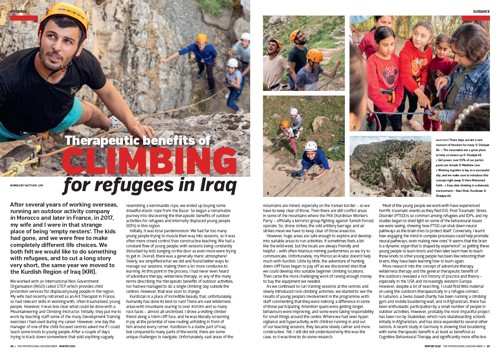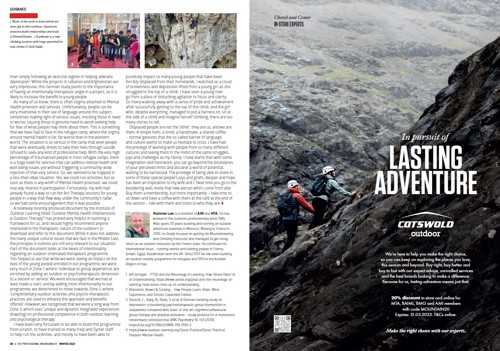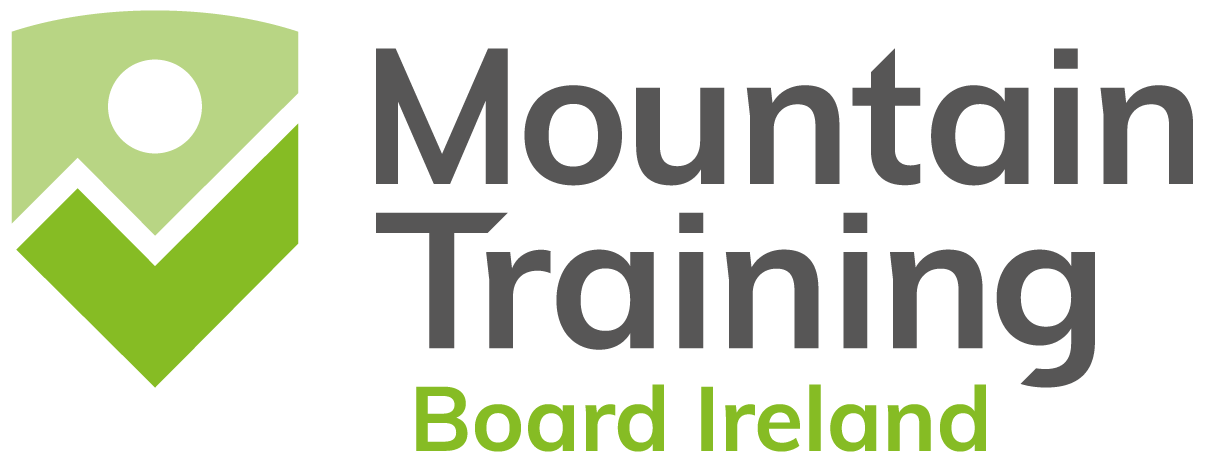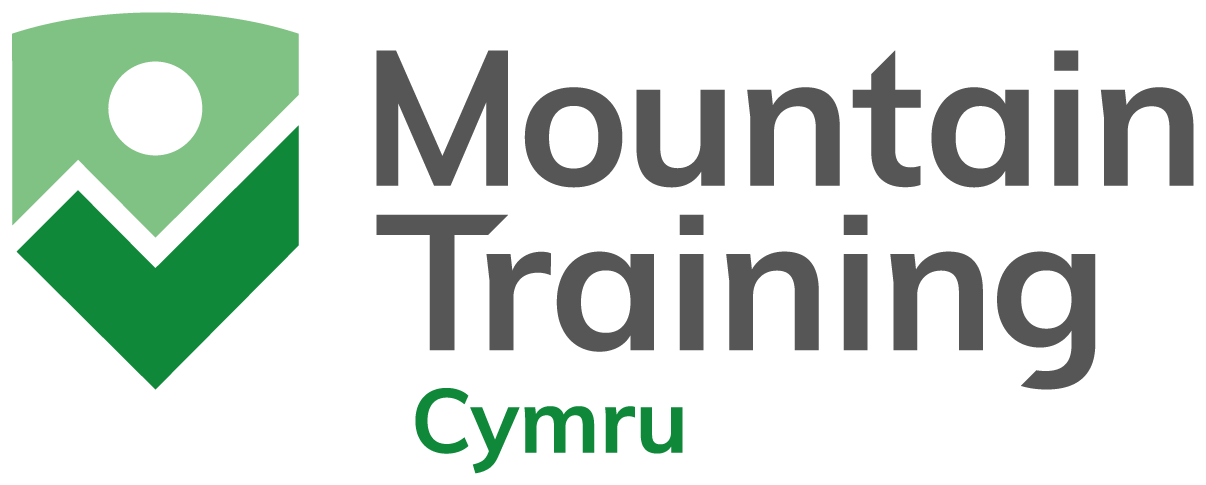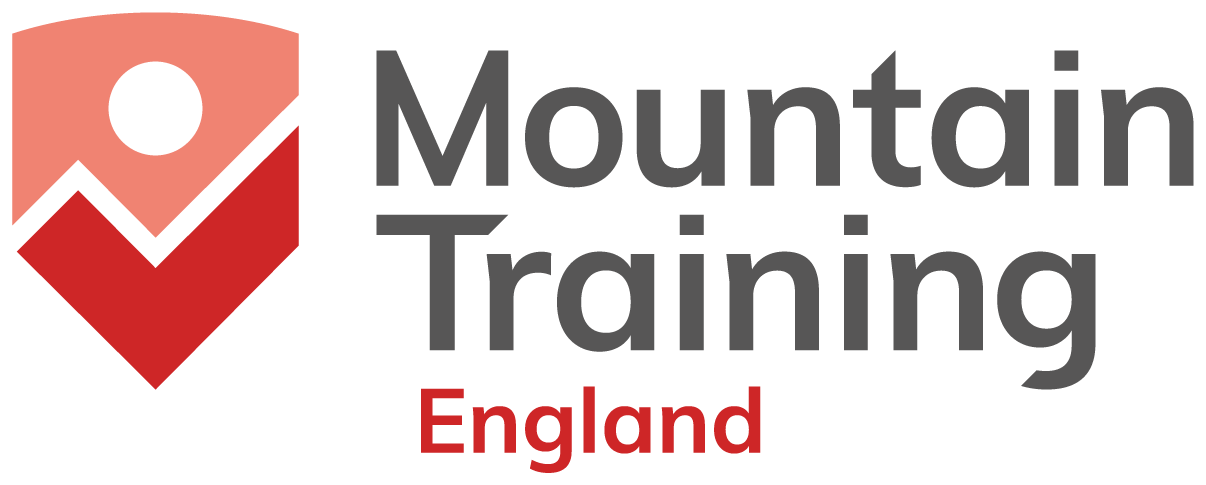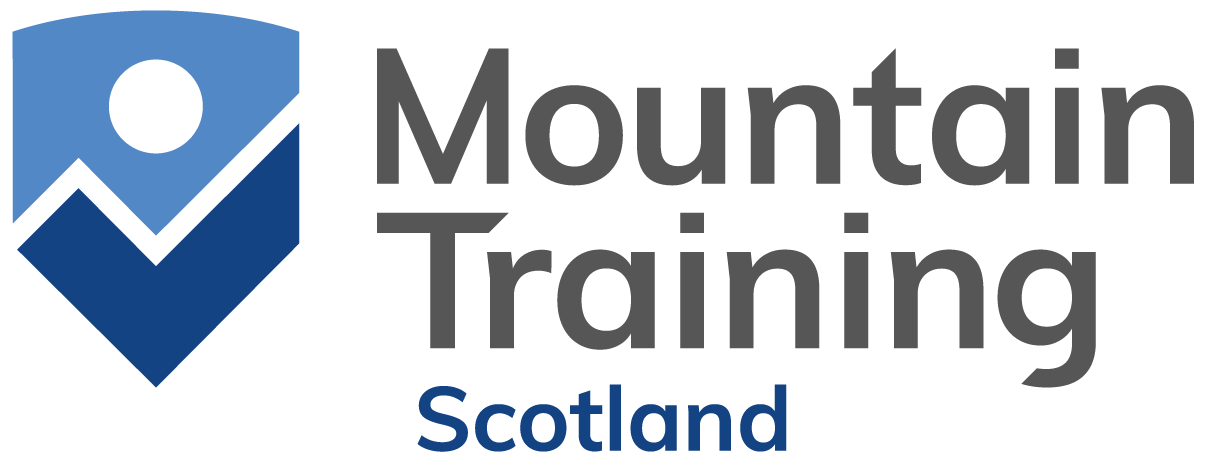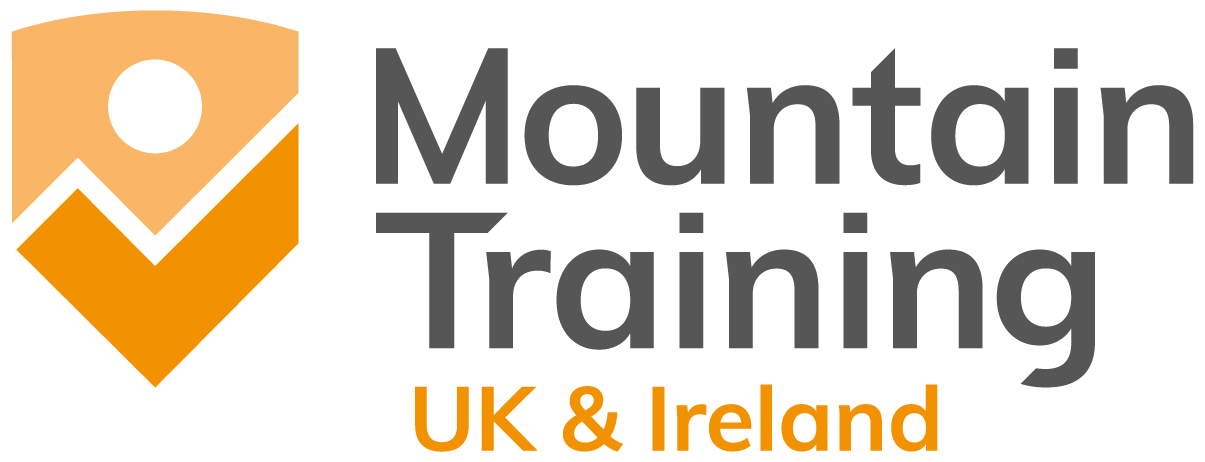We can only do this with your help. You could write a single article or become a regular contributor by writing a short series. All articles will be accompanied by a mini biography, giving you a prime opportunity to promote yourself and your business. The Professional Mountaineer is the only peer-reviewed magazine for this readership and consequently its content carries a premium level of authority and respect.
The four issues are published at the beginning of March, June, September, and December, incorporating seasonal content reflecting the walking, climbing and mountaineering calendar.
*Our members are from throughout the UK and Ireland so please ensure facts, figures, statistics and reference points reflect this - if your article focuses on just Ireland or just the UK please make this explicit in the introduction - preferably please include details and data from both the UK and Ireland*
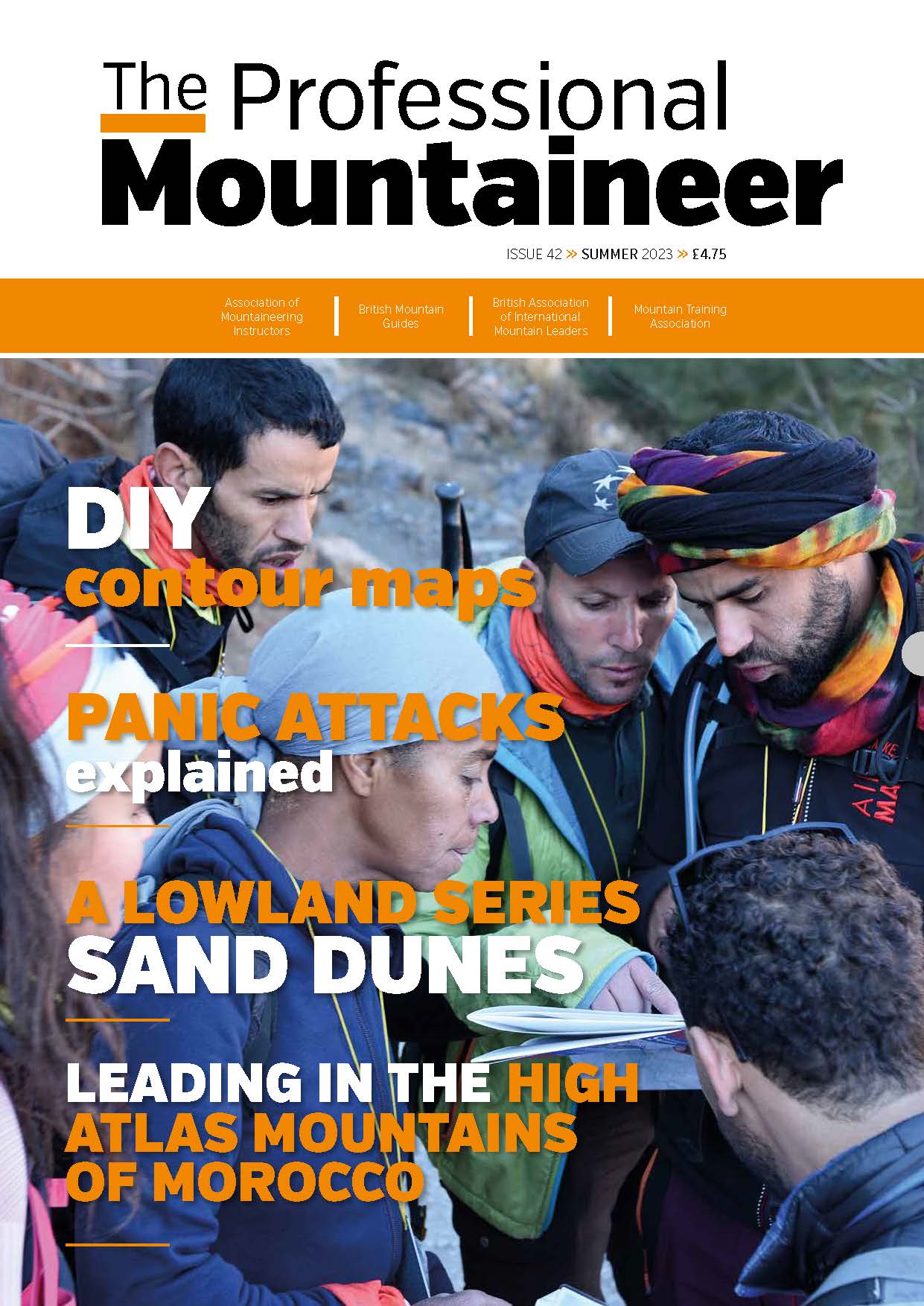
Articles are divided into subject areas, so should relate to the following categories:
Destinations
Where’s good to go for personal climbing trips, walking, expeditions or your first alpine routes. Sharing trips and experiences, whilst importantly providing practical information on where to go and what’s on offer. This should enable a reader to follow in your footsteps: How you selected your destination; where, how what form of guide or guidebook you used; travel and accommodation costs and locations; tips to make travel their easier; and what you can discover along the way. Logistics as much as why visit.
Technical
Methods of executing skills and techniques related to walking, climbing and mountaineering. Subjects like teaching lead climbing indoors, improvised rescues, short roping, improving navigation, contour interpretation, winter skills, ski touring and alpine mountaineering. Take a specific technical skill within one of the Mountain Training handbooks or Guide training programme, and give your take on it and how you utilise it in your activities.
Our Planet
All subjects linked to the natural environment, its geology, flora and fauna, weather, conservation, sustainability, current affairs and/or topical events around the world that impact the environment.
Wellbeing
All subjects are linked to mental and/or physical wellbeing, mental and/or physical health and the health and wellbeing benefits of our activities. Practical examples of how the members of the associations can use therapeutic tools, the outdoors or their activities to support and enhance participants wellbeing, as well as developments in Outdoor and Adventure therapies.
Business
Advice and information that will help other outdoor professionals from a business perspective whether it’s advice on how to get started, cost effective and self-marketing opportunities, maximising ways of promoting your service or business, social media and legal liabilities.
Guidance
Advice about good practice or lessons learned through experience. These should take the core understanding outlined in the handbooks and the Guide training programme, and illustrate how you use them and have adapted them to fit your practice. Subjects covering leadership, expeditions, top tips for training and assessment courses, safe adaptations of techniques, coaching models and more.
Article and photo guidelines
(there are images of a selection of articles below showing how they appear in the magazine so that you can see what word length and selection of photos work to create a 2 or 3 page article)
Articles should be submitted as a Word document without complex formatting or any images included. Photos and figures should be sent separately.
If you are using a Mac and/or you don't have Word, Open Office is a free and compatible open source alternative to word.
Please do not insert a double-space after a full stop.
Articles should be within the following word counts:
- 600-800 words (over 2 pages this would be text light and photo/illustration heavy)
- 800-1200 words (over 2 pages this would have text and photos approximately half and half)
- 1200-1600 words (over 2 pages this would be text heavy and photo/illustration light)
N.B. Please see examples below to get a sense of how word count and photo size impacts the layout of an article.
Please do not submit articles longer than 1600 words as they will need to be edited down to fit.
- Bio’s for alongside your article should be up to 70 words (400 characters), these count outside of the above word limit. Please also submit a shortened bio of up to 35 words (200 characters) for possible inclusion on the editorials page.
- Images should be sent in as high resolution as possible and at least 300dpi (digital pixels per inch). They should ideally be sent as separate attachments rather than embedded in the Word document or email. JPG or TIFF preferred but most image formats will work.
- Captions and relevant photo credits must be provided along with any copyright information. You can name the file using the caption and credit or, if you know how, include the description in the IPTC data field for description or caption.
- Images with drawn captions, ‘topo’ lines etc – please also include the originals.
- Include a photo to accompany your bio, preferably head and shoulders, also at 300dpi.
- We may need to redesign diagrams and pie charts to fit the ‘house style’.
Book Reviews 400-600 words
We include book reviews, particularly for new releases, and look for volunteers to review books offered to us by sponsors and advertisers. We promise and require honest “warts and all” appraisals.
Front covers
- Active individual/s climbing, mountaineering or walking. If in the foreground, ideally looking up and at the camera, smiling. If in the distance can be facing towards or away from the camera.
- Submissions should have the focus to one side to allow for article titles on the other, and be cropped into a square (slightly portrait) 210 x 215 ratio.
- Pictures should be capable of reproduction at 300dpi, please save your JPG file at “high quality” (80% or better). Don’t worry if you are unsure, send them across anyway.
- The final image is 21cm x 21.5cm, so bear that in mind when selecting/sending submissions.
Examples of good cover images are:
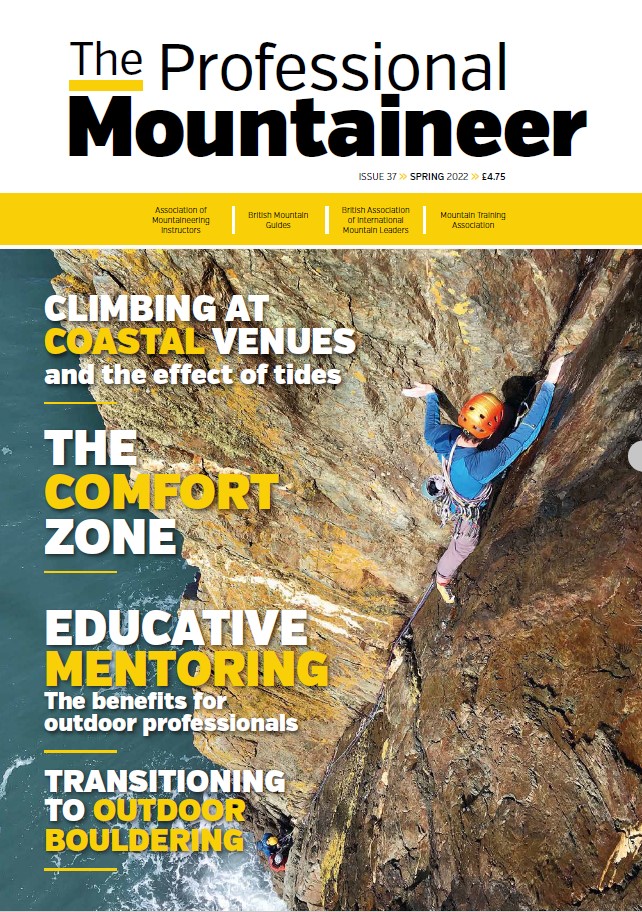

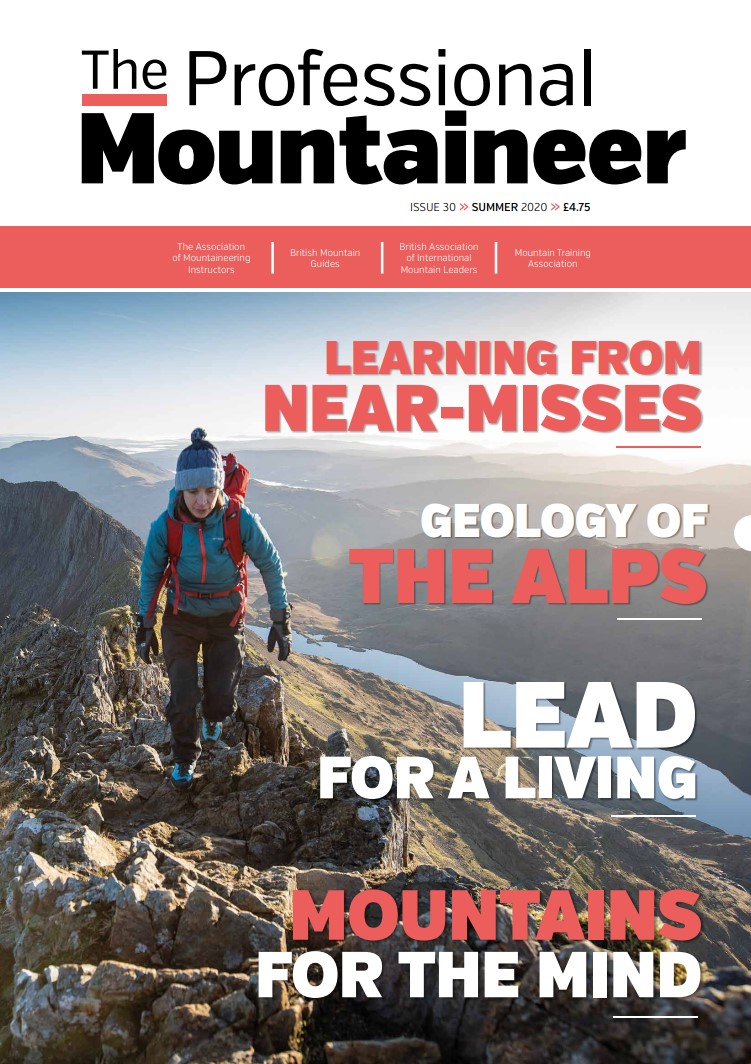
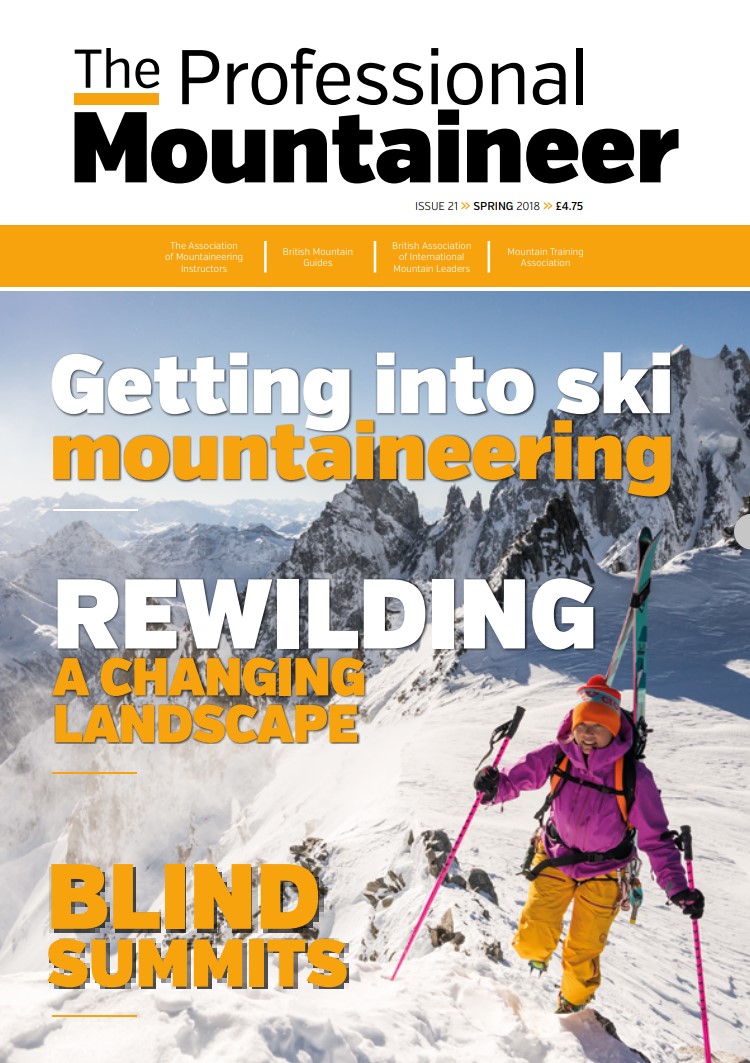
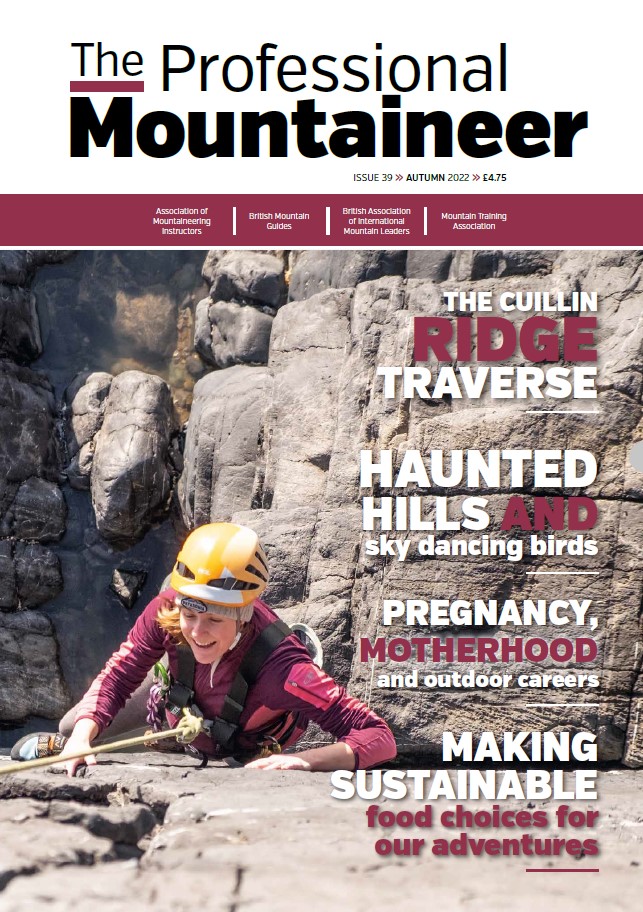
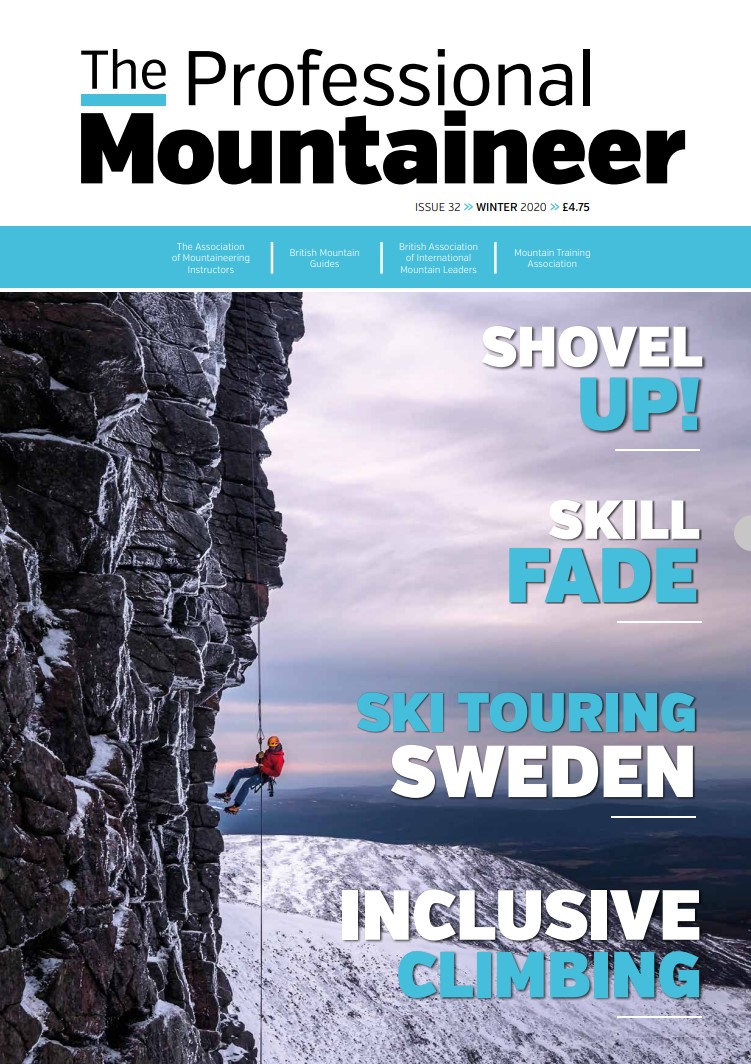
Deadlines for copy are as follows:
- Spring issue: mid January for March mail-out
- Summer issue: mid April for June mail-out
- Autumn issue: mid July for September mail-out
- Winter issue: mid October for December mail-out
For submissions, exact deadline dates, more information or to discuss an idea please contact:
Editor: Belinda Buckingham — belinda@mountain-training.org
The Professional Mountaineer is registered with the British Library: ISSN 2052-3351
Example articles below (to give an idea of how the article will look based on word count, number of pages and images used):
Destinations – 1282 words, 2 pages
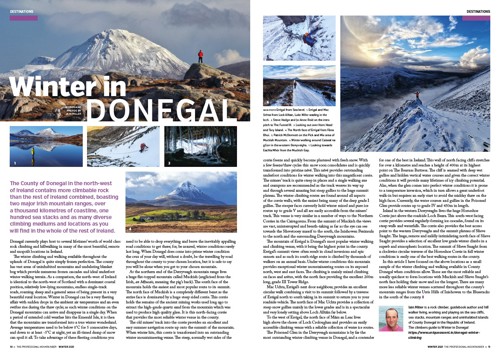
Destinations – 1312 words, 2¾ pages
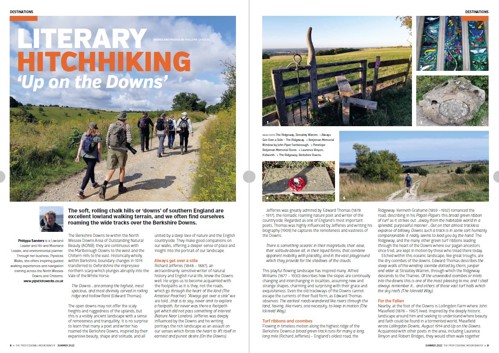
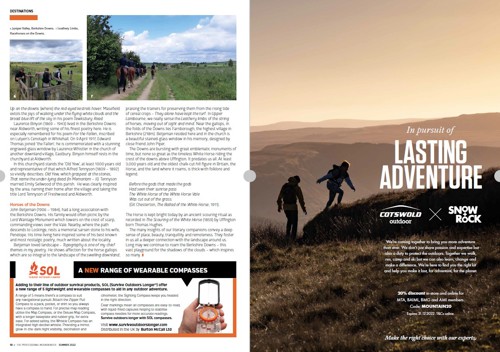
Technical – 627 Words, 2 pages
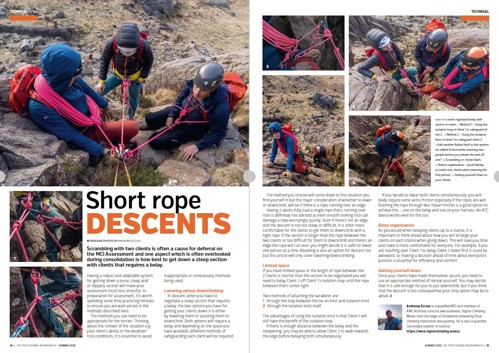
Technical – 715 words, 1¾ pages
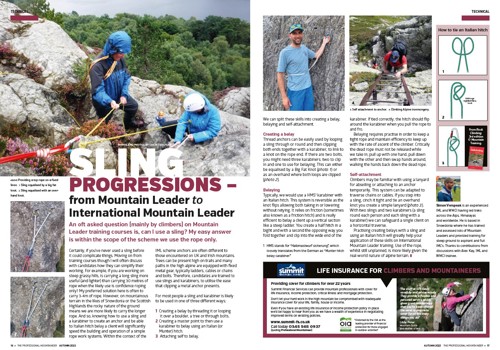
Business – 1238 words, 1½ pages

Guidance – 1966 words, 3 pages
